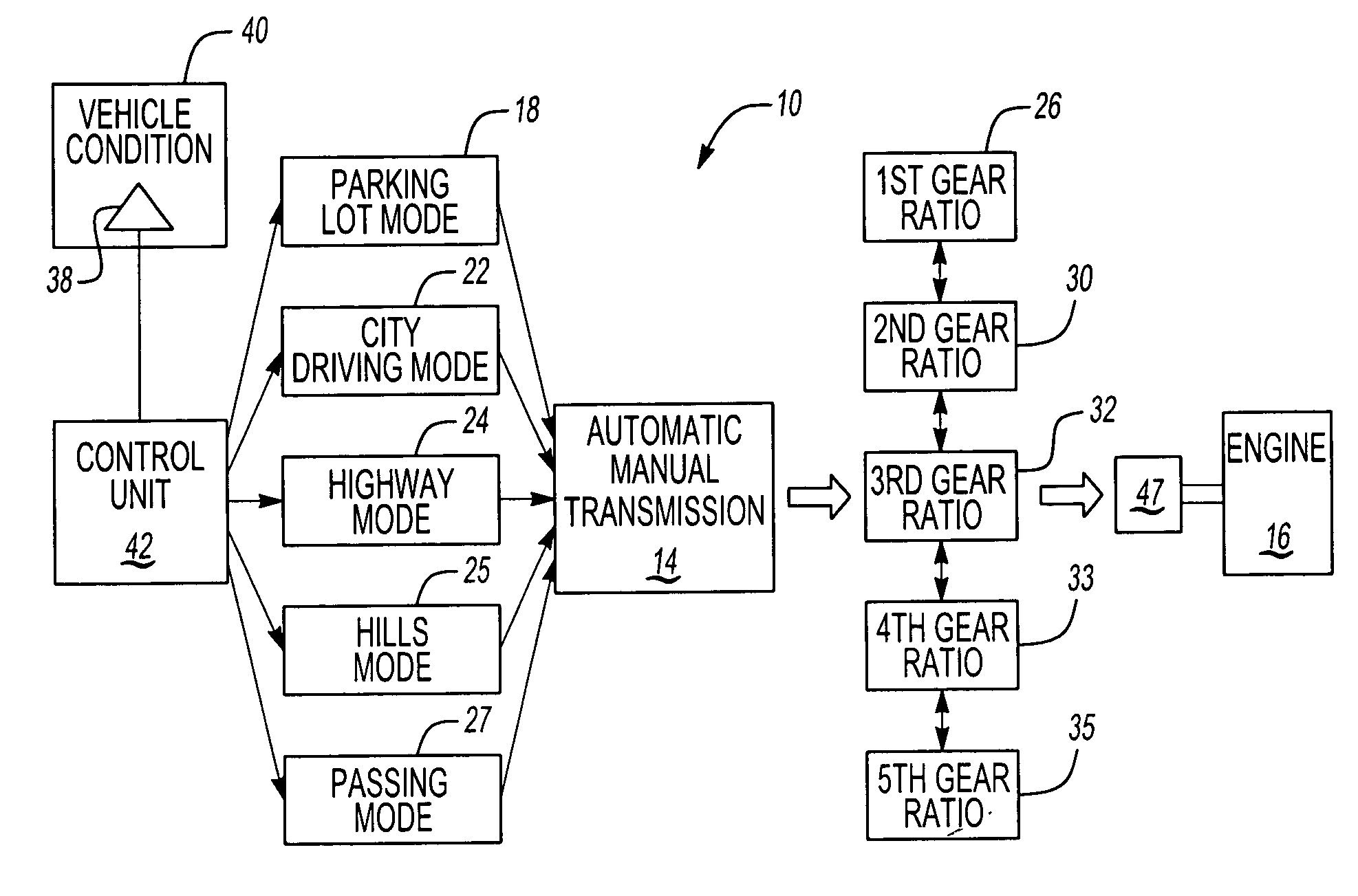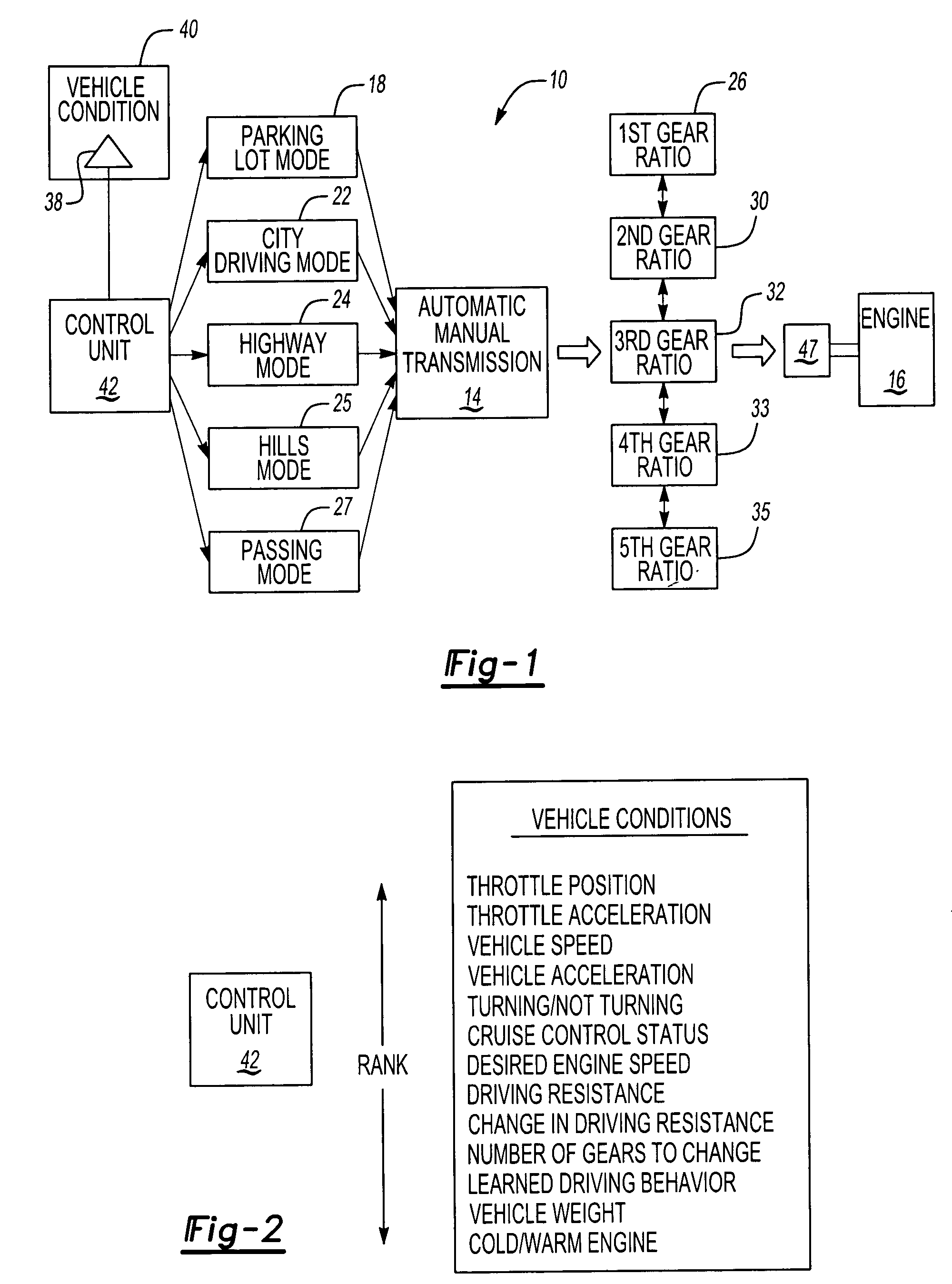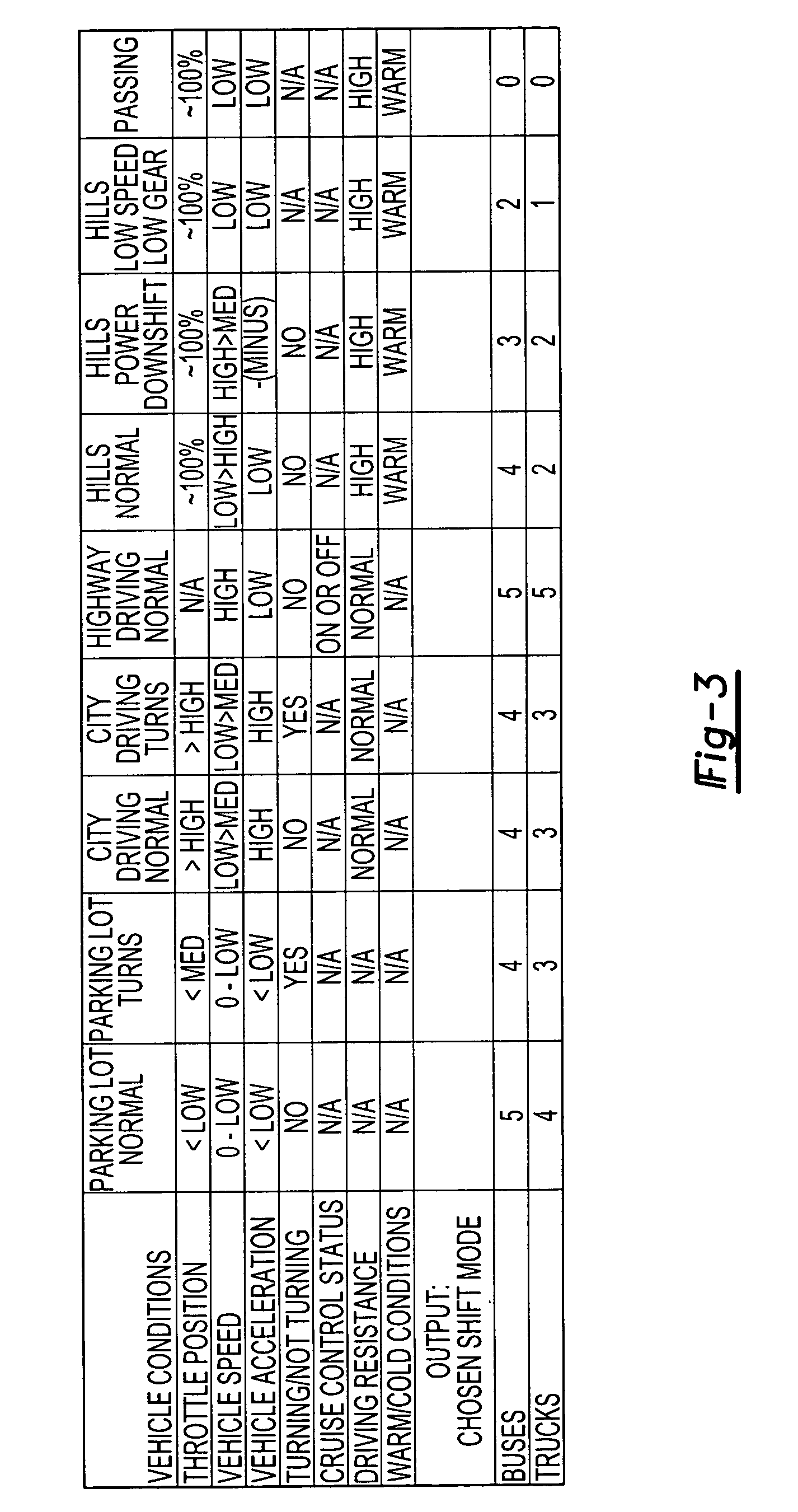Adaptive shift sequencing
a technology of shifting sequence and shift, applied in the direction of gearing control, gearing element, belt/chain/gearing, etc., can solve the problems of requiring fast and responsive shifting, vehicle climbing up a hill, and limiting the control of the vehicle operator over the change of the gear ratio, etc., to achieve the effect of faster engine braking and higher level of responsiveness
- Summary
- Abstract
- Description
- Claims
- Application Information
AI Technical Summary
Benefits of technology
Problems solved by technology
Method used
Image
Examples
Embodiment Construction
FIG. 1 illustrates inventive transmission system 10, which in this instance comprises an automatic manual transmission 14 having a number of varying gear ratios. As known, automatic manual transmission 14 alters a gear ratio between engine 46 and the driving wheels of the vehicle through clutch 47. The automatic manual transmission 14 has first gear ratio 26, second gear ratio 30, third gear ratio 32, fourth gear ratio 33, and fifth gear ratio 35. Each of these gear ratios provides a different gear ratio between engine 46 and the vehicle drive wheels. The automatic manual transmission 14 permits the selection and transition from one gear ratio to another. However, like a manual transmission, the point of shifting between one gear ratio to another may be controlled by a driver. If the driver chooses not to shift, the shift is performed automatically.
In existing systems, the rate of shifting between one gear ratio to another, such as from the first gear ratio 26 to the second gear rat...
PUM
 Login to view more
Login to view more Abstract
Description
Claims
Application Information
 Login to view more
Login to view more - R&D Engineer
- R&D Manager
- IP Professional
- Industry Leading Data Capabilities
- Powerful AI technology
- Patent DNA Extraction
Browse by: Latest US Patents, China's latest patents, Technical Efficacy Thesaurus, Application Domain, Technology Topic.
© 2024 PatSnap. All rights reserved.Legal|Privacy policy|Modern Slavery Act Transparency Statement|Sitemap



